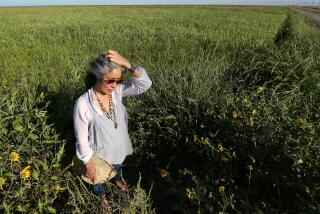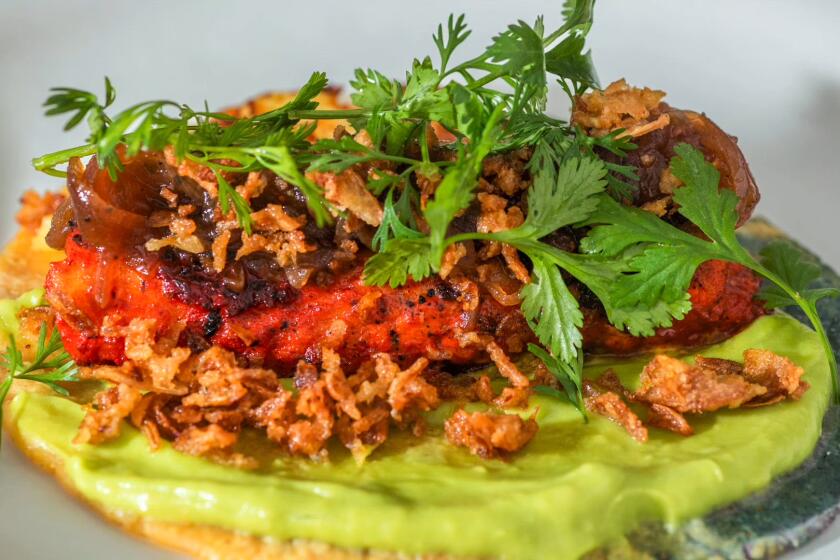The little-known California sake you didn’t know you needed
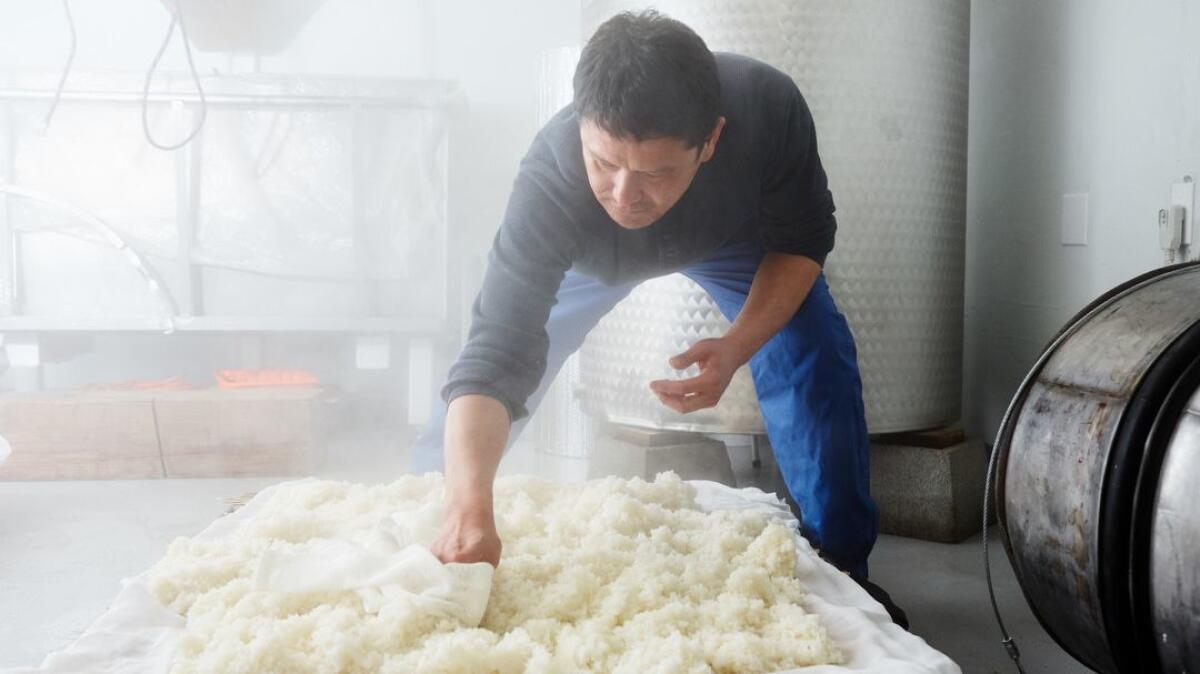
Reporting from Oakland — When I ask Yoshihiro Sako of Den Sake Brewery whether his first love was wine or sake, he answers slowly, as if it were a trick question. “Sake.” Then, with a smile: “Of course, that’s what I should say.”
It’s not a trick question, though. Sako, who is Den’s head brewer (and, apart from his business partner, its only employee), often uses the language of wine to describe his sake. He started learning about wine and sake at the same time, in the early 2000s, when he was the manager of Corkage, a now-closed San Francisco shop and bar with more than 200 wines and sakes. Sako’s mission with Den is similar to that of many upstart wineries in California and beyond: to create a hyper-local, small-batch drink that speaks to the place it was made.
For the record:
2:40 p.m. April 17, 2019An earlier version of this story said most sake is released after one to two years of aging. It is generally released after three to six months.
Den, which is Japanese for “rice paddy,” is what you might call a nano-brewery. Sako released his first batch of sake in August 2018. Since then, he’s released about 1,500 500ml bottles every two months; his sixth batch will go out the next few weeks. He has just purchased his fourth stainless-steel fermentation tank from a neighboring winemaker, Chris Brockway in Berkeley, which will allow him to increase his bimonthly yield to 2,000 bottles.
Despite its tiny scale, Den has made the lists of exciting restaurants around California, including Shibumi in downtown Los Angeles, Izakaya Rintaro in San Francisco, Soba Ichi in Oakland. In February, Sako was named a James Beard semifinalist for the wine, spirits, or beer professional award. (His sake is not yet available in shops in L.A.)
Den sake is a junmai sake, meaning it is made from rice that is milled down to 70% of its original size, as opposed to the 60% required for ginjo or 50% for daiginjo. While the conventional wisdom is that the more the rice is milled, the “purer” and more premium the sake, many experts are pushing against this idea. Shinichi Washino, who oversees the tightly edited 10-bottle sake list at Soba Ichi, serves nine junmais and only one ginjo sake. “I don’t really like daijinjo or ginjo sake, even though that’s the trend. They’re too aromatic, too fruity to go well with food.”
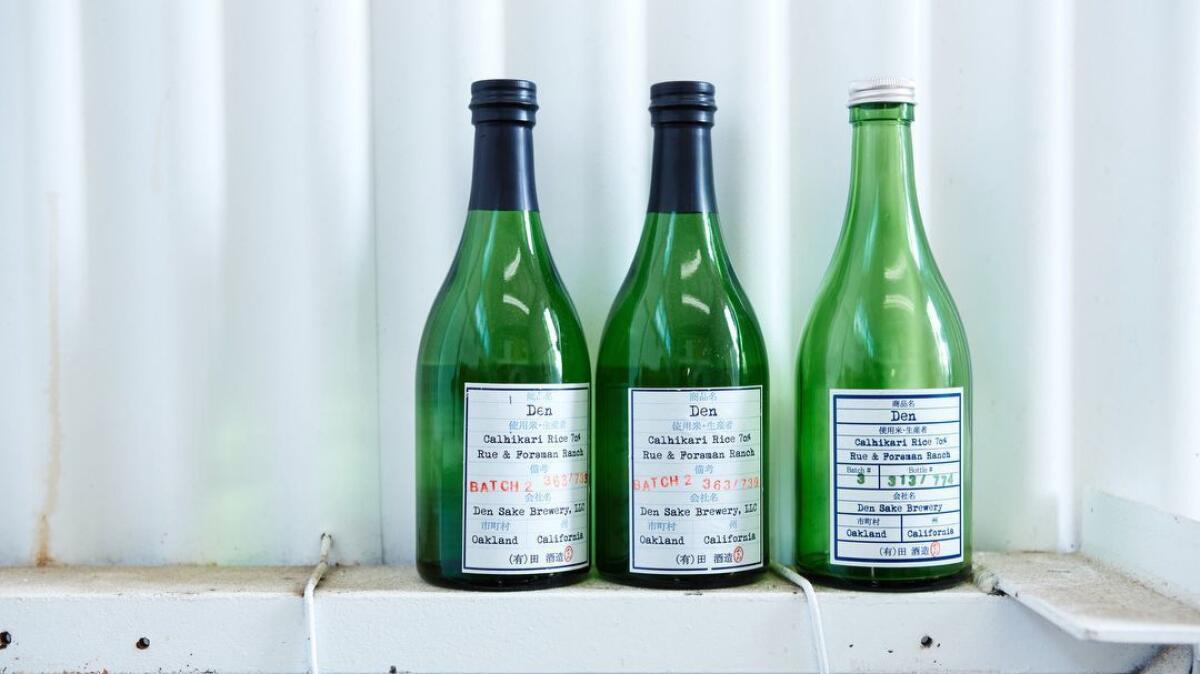
Sako says he has designed Den Sake to pair well with food — traditional Japanese dishes, like what’s served at Soba Ichi, but also the California cooking he enjoys at home.
“My sake is relatively young,” Sako explains. Sake is generally released after three to six months of aging, but Sako releases his right at three months. This is mostly a logistical decision; he doesn’t have an extra tank to store the sake, and to meet customer demand, he likes to release each new batch whenever the last sells out.
“I like to pair Den with green vegetable sauces: pesto, olive oil, chimichurri, gremolata. A tomato sauce is a good match too because my sake has higher acidity than other sakes.” Because of the way Sako manipulates the mash temperature before fermentation, Den often has twice the acidity of traditional Japanese sakes, which helps it stand up to a wider range of foods.
Going further down the wine-and-sake path, I ask him if he thinks sake is capable of expressing terroir.
“Wow, that’s a big, big question!” he says with a laugh. Sako is quick to point out that even in the world of wine, terroir resists definition and is difficult to talk about. But he makes one key distinction between wine and sake: “For wine, of course, the grape is the most important element; the majority of a wine’s characteristics comes from the grape.” That means that how the grape was farmed and the soil in which it was grown profoundly affect the finished wine.
“But for sake making, it’s a little bit different. It’s more about technique, about people controlling the process.” This makes sense on a scientific level: Grapes, because they contain sugar, can interact with naturally occurring molds and yeasts in the air to spontaneously ferment into wine. (Although, unless you’re a bear wandering the forest and looking to catch a buzz, you might not want to drink the stuff.) Rice, by contrast, does not have natural sugars; a sake brewer must add a specialized fungus called koji to convert the rice’s starch into glucose, which then gets fermented into alcohol.
Sako is quick to point out that his raw ingredients do matter, and are a huge part of what makes his sake so special. “Eighty percent of sake is water,” he tells me. You can hear the pride in his voice when he notes that he only uses Oakland water, unfiltered. “It’s super, super soft water.”
And apparently, it varies rather noticeably depending on the weather conditions in the Mokelumne River watershed, in the Sierra Foothills where the East Bay’s water supply comes from. “In rainy seasons, they release the water more quickly from the reservoir, so there’s less contact with the walls of the reservoir and less mineral content. During a drought, the water stays in the reservoir for a long time, so it stays in contact with the walls longer, creating more minerality.” He feels his latest batches, which were made after the recent rains, taste different from early batches made during a drought. He embraces these microscopic differences: They are a way his sake “expresses the locality.”
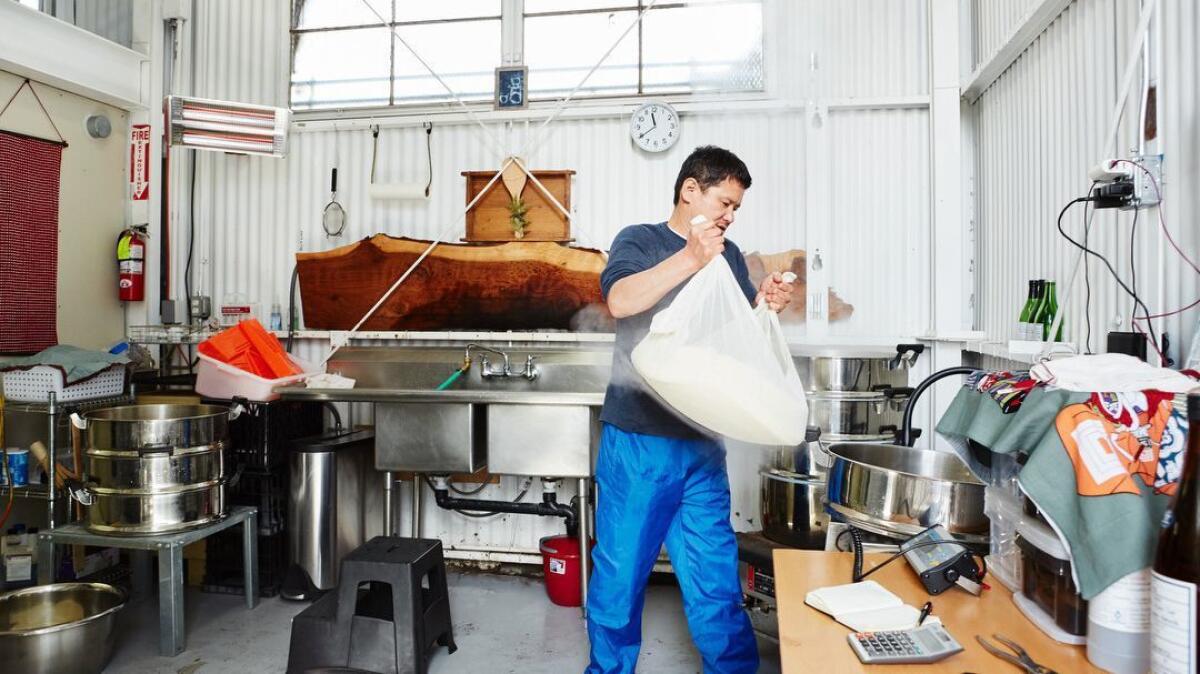
Of course, the most important ingredient in any sake is the rice, which Sako sources from Rue & Forsman Ranch, a family-run operation in Rio Oso, Calif., about 40 minutes north of Sacramento. There, Michael Bosworth grows 18 different varieties of rice, including the Calhikari rice Sako uses to make his sake. In Japan, most sake is made from some variety of sake rice (sakamai), mostly the medium-grain Yamada Nishiki, which is commonly called the “king” of sake rice. Calhikari, by contrast, is a short-grain eating rice, a hybrid cross of a premium Japanese sushi rice called Koshihikari and California’s ubiquitous Calrose variety. Making sake from eating rice is rare in Japan.
After taking a tour of Rue & Forsman with Bosworth, Sako knew that he wanted to work with the farmer, even though the ranch doesn’t grow a sake-specific rice variety. “Yoshi appreciated what we were doing, the unique character of our rice, and our ability to identity-preserve the rice through the supply chain to him.”
Most rice, even that grown by smaller farming operations, is sent to a centralized drying facility for processing. There, rice from any number of farmers is dumped onto one conveyor belt and mixed together before packing and shipping. So it’s impossible to know where exactly your rice comes from. This is true for not only rice, but also grains and many other products bought on the commodity market.
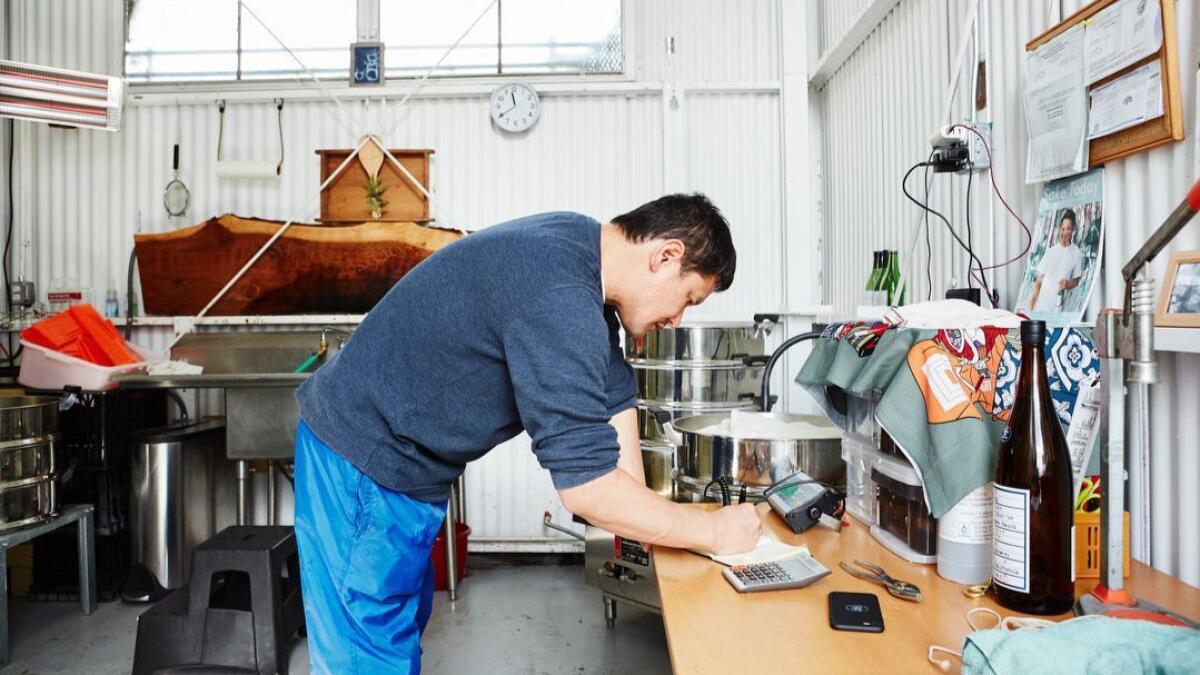
“At most drying facilities, you’re not going to have your own little silo for ‘Bob’s Farm’ and ‘Jim’s Farm,’” Bosworth explains. “They’re just going to put it all together, trying to do things as efficiently as possible.” But Bosworth bypasses this entirely: He purchased his own drying facility with 15 different small silos, and he manages all of his own distribution.
Fermenting sake from an eating rice is no easy feat — there’s a reason Japanese brewers rely on sakamai like Yamada Nishiki, which along with other sake-rice varieties has a starch pod at the center of the grain called the shinpaku. After the rice is steamed, the shinpaku helps trap moisture in the interior of the rice, which is a magnet for koji spores. This causes the koji to drill into the center of the rice grain, maximizing enzyme action and resulting in a more complete conversion of starch into glucose. The sushi rice Sako uses, Calhikari, has no shinpaku, which means that Sako has to work harder to get the koji fungus to penetrate the surface of the rice.
“I apprenticed with a Japanese brewery, and learned all these numbers: Weigh the rice dry, weigh it after soaking, and you should get a certain water absorption ratio in order to make a good koji.” But he quickly realized that none of those numbers applied in Oakland — the rice and water were too different. “I learned I needed to adjust to the conditions here. It’s taking a long time.”
I can’t help but think about the old wine adage that the harder a grape has to work to survive, the better, more ethereal the wine. I’m sure I’m just imagining it, but maybe, just maybe, you can taste how hard Sako has worked to make his sake the success it is.
More to Read
Eat your way across L.A.
Get our weekly Tasting Notes newsletter for reviews, news and more.
You may occasionally receive promotional content from the Los Angeles Times.


